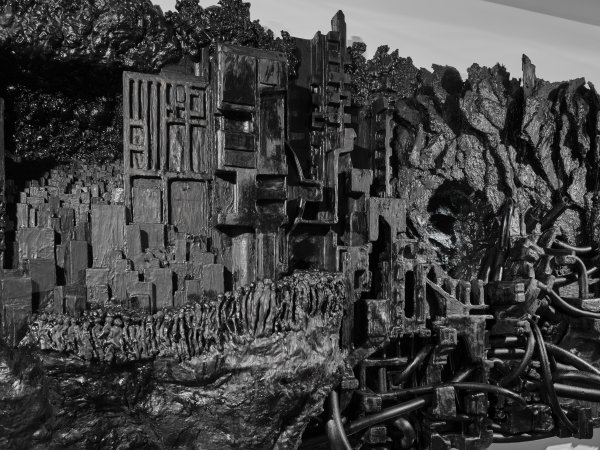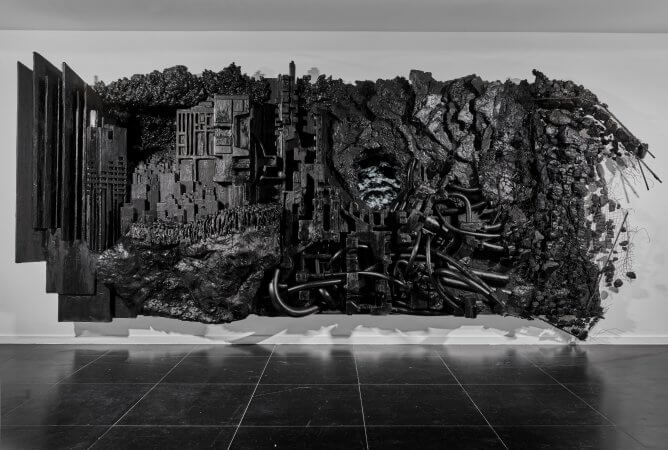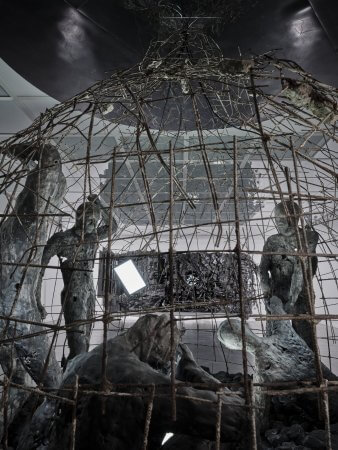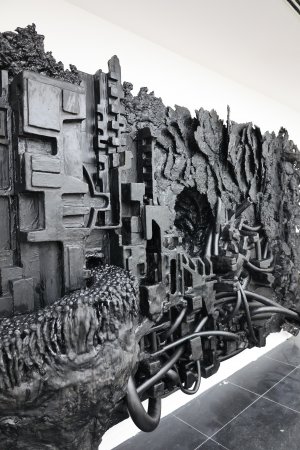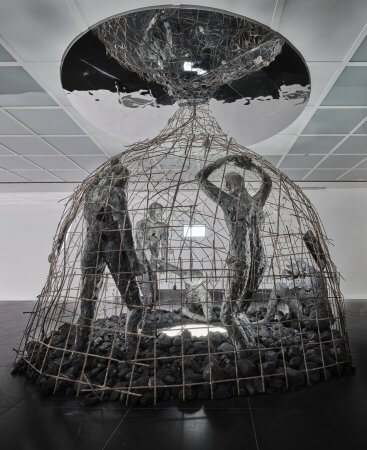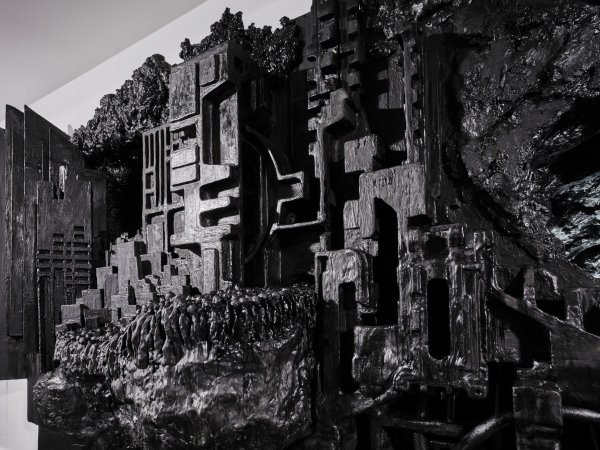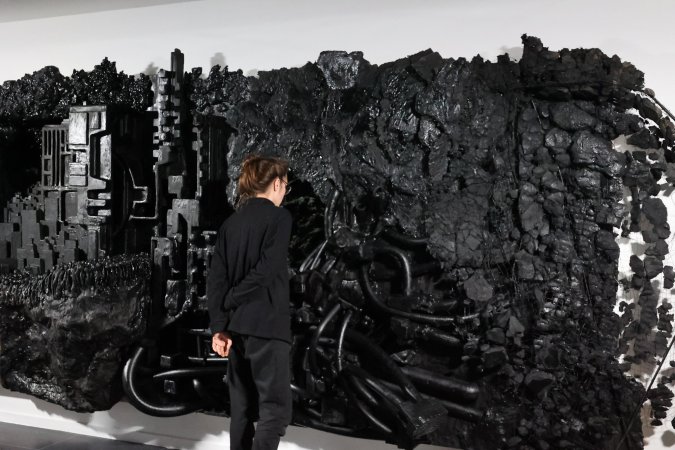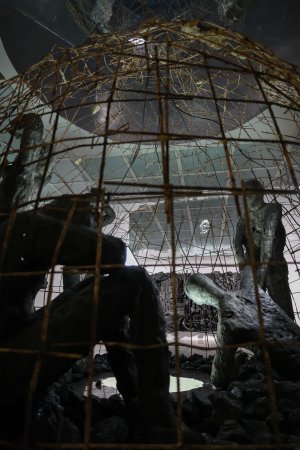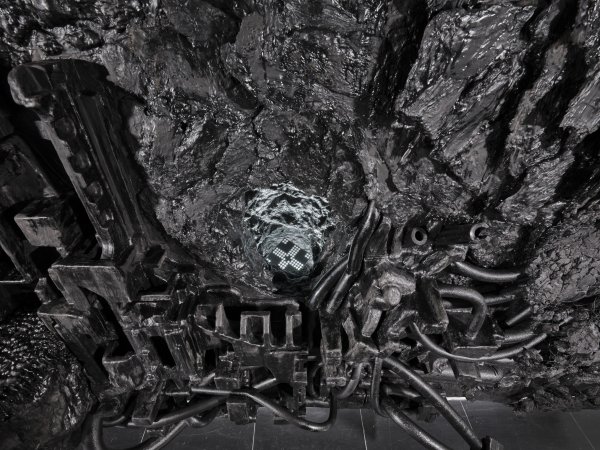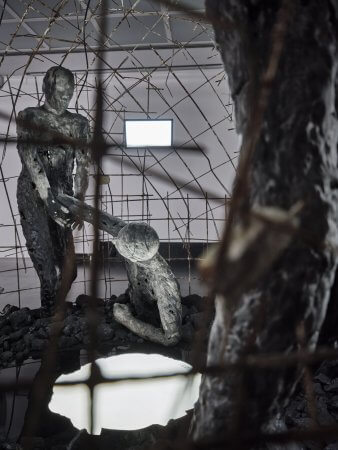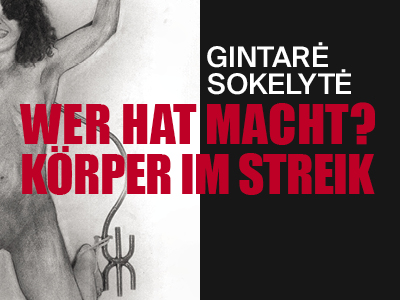Gintarė Sokelytė, A-Type-Complex and 25
A-Type Complex, 2024
Installation
Construction grids, coal, reflective foil, screen, series of sculptures made of chicken wire, plaster and engine oil
Height 255 cm / ⌀ 260 cm
25, 2024
Wall sculpture
Styrofoam, iron wire, metal, various plastics and engine oil
5 x 1,8 m
Courtesy the artist
A-Type Complex is the title of the igloo-like hemisphere woven from salvaged, rusty construction grids. Inside is a display of human figures, either upright or sitting down, and neither female nor male; not individuals as such, but rather forms of human existence. Their bodies are open, raw and permeable, reminiscent of survivors of a catastrophe. Gintarė Sokelytė creates them out of plaster, malleable and porous at the same time, then paints them with burnt engine oil. The mineral oil is viscous and toxic, and yet, at the same time, it is the fluid that kept the engine of the industrial age running.
The floor is covered with coal from which the human figures rise up, their bodies hollowed, ravaged and reduced, as if by fire, to their essential form. And beneath them there is a monitor screen. Time holds a special significance in Sokelytė’s work. It continues to tick relentlessly, and yet repeatedly returns to a starting point. This special significance is exemplified by her fascination with George Woodcock’s book The Tyranny of the Clock. Time, rhythm and measurement are seen as distinguishing features between early societies and people in the modern era — time as a structure and order that determines the life and experience of individuals. Above the lattice igloo-like structure hangs a mirror, doubling its hemispherical shape, and the memory of an hourglass is suggested in the reflection. Time and transience, the past and the ever recurring, seen as eternal principles of all life.
The final part of the grand installation consists of a 5-metre-long wall sculpture. The black, three-dimensional work, entitled 25, is a dense formation of architecture, geometric structures, ruins of grids and stone and a flow of people winding through the construction. The work resembles a medieval altarpiece in its compression and superimposition — abstract yet concrete. Gintarė Sokelytė built it out of found materials, materials that the city itself produces, uses and leaves behind.
The artist attributes strong narrative value to each of her materials. Thus, the wall painting, like the human figures, is not painted with colour paint but blackened by the layered application of burnt engine oil. This toxic substance is a residual waste of industrial production — from engine combustion — a lubricating non-biodegradable oil that sticks to people’s skin. Coal is also an intensely associative material for the artist. The material encompasses time itself — from the primeval age of its geological formation for over 350 million years. It was the catalyst for human energy production from ancient times to industrialisation in the age of machines, and then as a raw material and force behind toxic environmental impacts.
How does the past affect the present? How is the future already embedded in the present? For this exhibition at the Frankfurter Kunstverein, Gintarė Sokelytė has created a stunning and monumental world. Her pictorial spaces are experiential universes that trigger associations and know how to strike the viewer at the very core of their emotional depths. She thinks in images and works with her own references. Like Aby Warburg, she compiles her picture atlas — her Mnemosyne Atlas — from which she feeds her grand installations.
She is a seeker who strives to gain knowledge, to establish connections, to explore what holds the world, humanity and the eternity of time together at its core.


